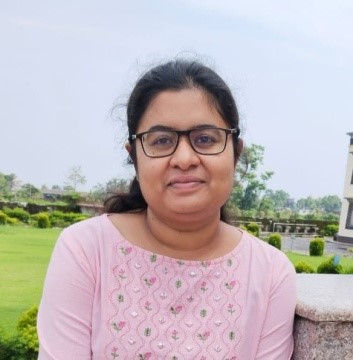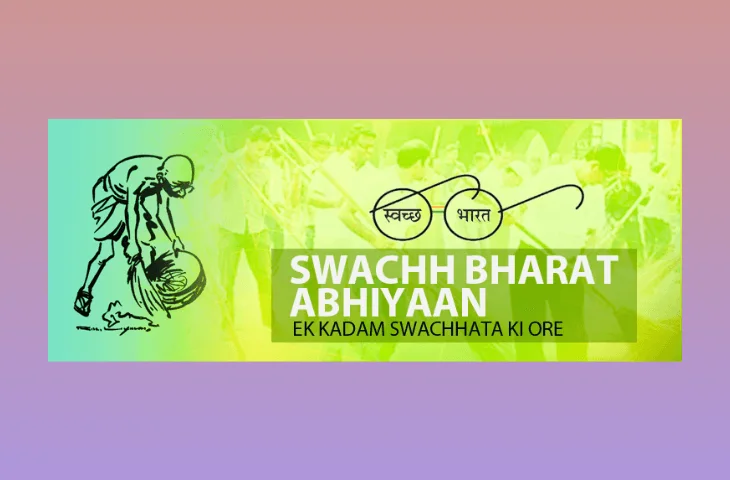The Swachh Bharat Mission (SBM) is one of India’s most ambitious cleanliness campaigns, launched on 2nd October 2014 by Prime Minister Narendra Modi. The mission was launched on the occasion of Mahatma Gandhi’s birth anniversary. The mission was envisioned as a tribute to Mahatma Gandhi, aiming to achieve a Clean India by 2nd October 2019. It focuses on promoting sanitation, hygiene, and cleanliness across both rural and urban India.
SBM is considered a mass movement, combining government action, public participation, and community awareness. It seeks to eliminate open defecation, improve sanitation infrastructure, manage solid and liquid waste scientifically, and encourage behavioral change toward hygiene practices.
What are the Phases and Structure of the Mission?
The Swachh Bharat Mission is structured into two major sub-missions, each tailored to urban and rural areas:
| Feature | SBM-Gramin (Rural) | SBM-Urban (Urban) |
| Managing Ministry | Ministry of Jal Shakti | Ministry of Housing and Urban Affairs |
| Focus Area | Rural sanitation, ODF villages, SLWM | Urban sanitation, ODF status, Garbage Free cities |
| Primary Objectives | – Construct Individual Household Latrines (IHHLs) – Promote behavioral change for toilet usage – Implement Solid and Liquid Waste Management (SLWM) – Encourage community participation via Gram Panchayats | – Construct community and public toilets – Implement scientific waste management systems – Promote waste segregation and recycling – Conduct behavioral change campaigns in urban areas |
| Phases | Phase I (2014–2019): Universal toilet construction, ODF villages Phase II (2020–2025): Sustain ODF, SLWM, integration with other schemes | Phase I (2014–2019): Toilet construction, ODF urban areas Phase II (SBM-U 2.0, 2021–2026): Sustainable sanitation, greywater & faecal sludge management, garbage-free cities |
| Key Strategies | Community participation, IEC campaigns, convergence with government schemes | Scientific waste management, technology use, awareness campaigns, citizen engagement |
| End Goal | Open Defecation Free and clean rural India | Garbage-free and clean urban cities |
What are the Objectives of the Swachh Bharat Mission?
The mission is designed to address multiple sanitation challenges in India. Its core objectives include:
- Elimination of Open Defecation: Constructing toilets for households, communities, and public areas.
- Eradication of Manual Scavenging: Ending the caste-based practice of handling human waste manually.
- Solid and Liquid Waste Management: Ensuring proper collection, segregation, treatment, and disposal of waste.
- Behavioral Change and Awareness: Promoting hygiene habits through education campaigns, mass media, and community participation.
- Improving Health and Environment: Reducing waterborne diseases, promoting maternal and child health, and enhancing environmental safety.
- Universal Sanitation Coverage: Ensuring toilets and proper sanitation facilities are available in households, schools, and public spaces.
- Public Participation and CSR Engagement: Encouraging citizens, NGOs, and private sector companies to participate in sanitation drives.
Also Check: List of Government Schemes of India
How does the Swachh Bharat Mission Work?
SBM’s success depends on a combination of infrastructure, awareness campaigns, and community engagement. Its implementation strategy includes:
- Financial Support for Toilets: Central and State Governments provide incentives to households for constructing toilets. In rural areas, BPL households receive up to ₹12,000 per IHHL, with contributions from both the Central and State Governments.
- Community Toilets: Constructed in areas where building individual toilets is difficult, with costs shared between Central, State, and local bodies.
- IEC Campaigns: Extensive Information, Education, and Communication (IEC) campaigns promote hygiene awareness and behavioral change.
- Technology Integration: Mobile apps, geo-tagging, and real-time monitoring track progress in sanitation and waste management.
- Solid and Liquid Waste Management: Promotes the 3Rs (Reduce, Reuse, Recycle), waste-to-energy solutions, and sustainable waste processing.
- Capacity Building: Training of government officials, sanitation workers, volunteers, and local bodies ensures efficient execution.
- Public-Private Partnerships: NGOs and corporate social responsibility (CSR) initiatives support project funding and implementation.
Check Out: Complete List of Important Schemes for NABARD Grade A Exam
What are the Achievements of SBM?
The Swachh Bharat Mission has recorded significant achievements over the years:
| Category | Achievements |
| Rural Achievements (SBM-G) | – India declared ODF in October 2019 – Over 10 crore toilets constructed under Phase I – ~93% of villages achieved ODF Plus status – Improved access to toilets reduced infant and child mortality rates – Women feel safer with better sanitation facilities |
| Urban Achievements (SBM-U) | – All Urban Local Bodies (ULBs) declared ODF – Cities adopted solid and liquid waste management practices (challenges remain) – Community and public toilets constructed at key locations (markets, bus stands, railway stations) |
| Health & Social Outcomes | – 60,000–70,000 child lives saved annually by curbing open defecation – Reduction in diarrheal deaths by 3 lakh in 2019 vs. 2014 – Improved school attendance, especially among girls – Livelihood creation: 1.25 crore people employed in sanitation-related work – Environmental impact: Significant reduction in groundwater contamination |
Get ready to crack government job exams with leading educators
What Challenges does the Swachh Bharat Mission Face?
Despite its success, SBM faces several hurdles that hinder its long-term sustainability:
Behavioral Challenges
- Toilets are sometimes used for storage of cow dung or remain unused
- Deep-rooted cultural habits of open defecation persist in rural areas
- Children below 15 years continue to practice open defecation in some communities
Infrastructure and Resource Gaps
- Water scarcity in rural areas affects toilet usage
- Poor quality of construction materials leads to non-functional toilets
- Urban areas struggle with inadequate waste management systems and sewage treatment
- Insufficient sanitation inspectors and trained personnel
Administrative and Funding Issues
- Decline in budget allocation from ₹16,000 crore in 2017–18 to ₹7,000 crore in 2024–25
- Fund utilization for IEC and awareness programs has reduced
- Inequitable access to sanitation for marginalized communities
- Urban slums and overcrowded areas often lack proper sanitation
Socio-Economic and Cultural Factors
- Practices like manual scavenging still persist in certain areas
- Privatization of sanitation has led to continued caste-based discrimination
- Wealthier states show slower progress in toilet usage compared to poorer states
Key Takeaways
| Aspect | Highlights |
| Launch Date | 2nd October 2014 |
| Objective | Achieve Open Defecation Free India, improve sanitation and hygiene |
| Phases | Phase I (2014–2019), Phase II (2020–2026) |
| Rural Mission | SBM-Gramin: ODF, SLWM, community participation |
| Urban Mission | SBM-Urban: ODF, Garbage Free cities, SLWM |
| Achievements | 10+ crore toilets constructed, 93% villages ODF Plus, reduced child mortality |
| Challenges | Behavioral resistance, water scarcity, poor waste management, funding gaps |
| Strategy for Improvement | Behavioral campaigns, quality infrastructure, technology, vulnerable population focus |
| Health Impact | Reduced diarrheal deaths, improved maternal & child health |
| Socio-Economic Impact | Job creation, women empowerment, increased school attendance |
Questions Based on Swachh Bharat Mission
- When was the Swachh Bharat Mission launched?
- a) 15th August 2014
- b) 26th January 2015
- c) 2nd October 2014
- d) 1st January 2014
- e) 2nd October 2015
- Which ministry manages SBM-Gramin?
- a) Ministry of Health
- b) Ministry of Housing and Urban Affairs
- c) Ministry of Jal Shakti
- d) Ministry of Rural Development
- e) Ministry of Environment
- What is the primary objective of SBM?
- a) Improve road infrastructure
- b) Eliminate open defecation
- c) Provide employment only
- d) Promote industrial growth
- e) Reduce literacy gap
- SBM-U 2.0 focuses on:
- a) Building highways
- b) Achieving Garbage Free cities
- c) Constructing schools
- d) Digital India initiative
- e) Promoting tourism
- What does ODF stand for?
- a) Open Drinking Facilities
- b) Open Development Fund
- c) Open Defecation Free
- d) Official Development Framework
- e) Organized Development Fund
- Which Sustainable Development Goal aligns with SBM?
- a) SDG 2: Zero Hunger
- b) SDG 6: Clean Water and Sanitation
- c) SDG 11: Sustainable Cities
- d) SDG 3: Good Health
- e) SDG 7: Clean Energy
- Which scheme is integrated with SBM to generate biogas?
- a) GOBAR-DHAN
- b) Pradhan Mantri Awas Yojana
- c) AMRUT
- d) Smart Cities Mission
- e) Swachh Vidyalaya Abhiyan
- What are the core pillars of SBM’s 10th-year celebration?
- a) Swachhata Ki Bhaagidari, Sampoorna Swachhata, SafaiMitra Suraksha Shivir
- b) Toilet Construction Only
- c) Digital India, Skill India, Clean India
- d) Housing, Roads, Toilets
- e) Health, Education, Nutrition
- Which challenge persists despite SBM’s success?
- a) All households use toilets
- b) Waste management inefficiency
- c) No public participation
- d) Complete water availability
- e) No behavioral issues
Also Read:
Answer Key
| Question No. | Correct Answer |
| 1 | c) 2nd October 2014 |
| 2 | c) Ministry of Jal Shakti |
| 3 | b) Eliminate open defecation |
| 4 | b) Achieving Garbage Free cities |
| 5 | c) Open Defecation Free |
| 6 | b) SDG 6: Clean Water and Sanitation |
| 7 | a) GOBAR-DHAN |
| 8 | a) Swachhata Ki Bhaagidari, Sampoorna Swachhata, SafaiMitra Suraksha Shivir |
| 9 | b) Waste management inefficiency |
| 10 | b) Financial support, IEC, technology, and public participation |
- MISHTI Scheme, India’s Initiative to Restore Mangrove Ecosystems
- National Green Hydrogen Mission Features, Objectives, and Benefits
- Paramparagat Krishi Vikas Yojana, Transforming India’s Organic Farming
- Mission on Integrated Development of Horticulture NHM and HMNEH
- Swachh Bharat Mission, India’s Journey Towards Cleanliness and Hygiene
- SAGY, A Step Towards Holistic Development of Indian Villages

Hi, I’m Aditi. I work as a Content Writer at Oliveboard, where I have been simplifying exam-related content for the past 4 years. I create clear and easy-to-understand guides for JAIIB, CAIIB, and UGC exams. My work includes breaking down notifications, admit cards, and exam updates, as well as preparing study plans and subject-wise strategies.
My goal is to support working professionals in managing their exam preparation alongside a full-time job and to help them achieve career growth.
